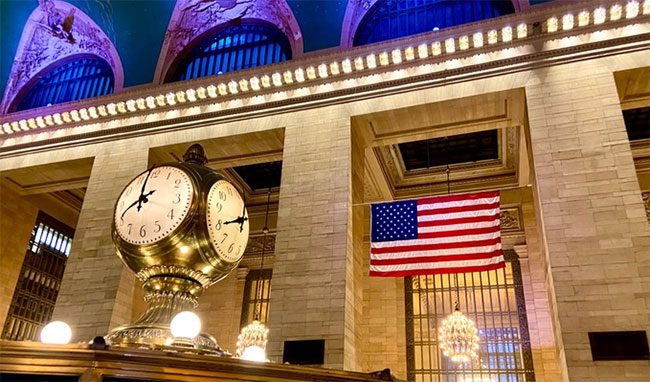More than 140 years ago, American educator Charles F. Dowd created the concept of time zones. Today, time zones govern the work and rest schedules of most people around the world.
Charles Ferdinand Dowd (April 25, 1825 – November 12, 1904) was born in Madison, Connecticut, USA. According to the Madison Historical Society, Dowd was a professional teacher. He was a student at the prestigious Yale University and dedicated his life to the field of education.

Mr. Charles Ferdinand Dowd. (Photo: Foxnews).
He and his wife, Harriet, founded Temple Grove Seminary in Saratoga Springs, New York, in 1868 and ran the school for over 30 years.
Dowd’s original idea for time zones in 1869 was related to the scheduling of trains during a time when time was measured locally by the sun. In the early 1800s, the sun served as the official “clock” in America, and time was calculated based on noon in each city or the moment the sun was highest in the sky.
“This method led to the creation of over 300 time zones across the United States. Not to mention the discrepancies in local times depending on the location,” shared the Union Pacific Railroad. The rapid development of railroads revealed that the North American continent was vast while exposing the limitations of solar time even over short distances.

Union Pacific train in California in 1964. (Photo: Getty Images).
This resulted in chaos in planning for the rapidly expanding railroad system, most notably the completion of the transcontinental railroad on May 10, 1869.
Dowd’s initiative transformed natural solar time into standardized time regulated by humans. The Indianapolis Sentinel commented at the time: “The sun no longer governs work.”
Dowd’s plan revolved around four time zones, at the meridians of 75, 90, 105, and 120 degrees. He used the 75-degree meridian, which runs through New York, as the basis for his Eastern Standard Time. He then established three national meridians: Central Standard (90); Mountain Standard (105); Pacific Standard (120). The time in each region was set one hour apart.
Dowd published a pamphlet titled “The National Time System for Railroads” in 1870. He later found a prominent supporter in railroad engineer William F. Allen.
The moment arrived on November 18, 1883. According to the Historical Society, Allen was present at the Western Union Telegraph System building in New York City to witness the implementation of the plan. Clocks were reset, and Eastern Standard Time was born. Allen successfully persuaded railroad officials to adopt this time zone.
The time system pioneered by the railroad industry did not become federal law until the Standard Time Act was passed in the United States on March 19, 1918.

Grand Central Station in Manhattan, New York opened in 1913, three decades after the American railroad adopted time zones. (Photo: Foxnews).
After the time zone project, Dowd earned a doctorate from the City University of New York in 1888. That same year, he was made a member of the London Society of Science, Literature, and Art. At a class reunion at Yale, he was referred to as the “father of time,” and he was recognized as the outstanding graduate of Yale for his internationally impactful invention.
Dowd died under the wheels of a locomotive in Saratoga Springs around 5:30 PM on November 12, 1904, at the age of 79.
Over a dozen countries agreed to adopt a unified time zone based on Dowd’s model as early as 1884.




















































